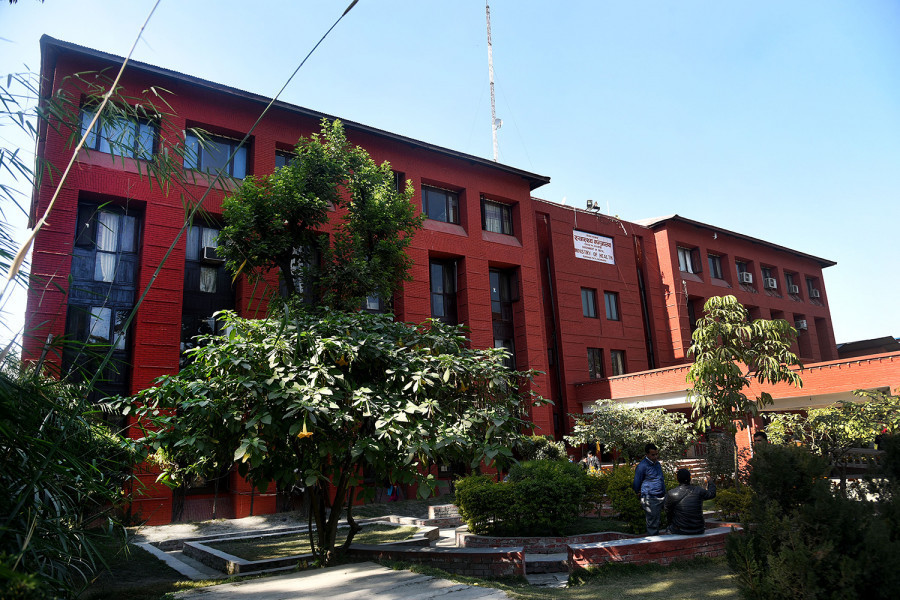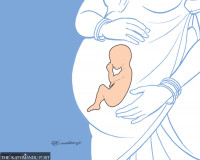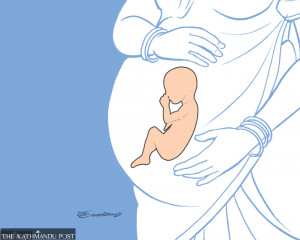Health
Health Ministry to provide hormonal tablets through volunteers to new mothers to prevent postpartum haemorrhage-related deaths
Nepal reduced the maternal mortality rate from 539 in 1996 to 239 in 2016
Arjun Poudel
When her labour started, Kalpana Gurung was at her parent’s home at Panchkhuwa Deurali in Gorkha. It was midnight and raining incessantly since it happened to be the monsoon season.
As the nearest health post was about five hours away on foot, Kalpana’s family members decided to deliver the baby at home. The 24-year-old, who was married to a man from Barpak Sulikot Rural Municipality, gave birth to a baby boy but started to bleed due to retained placenta after some time.
Her family members waited until the next day in the hope that her bleeding would stop and for the placenta to come out.
"Gurung’s neighbours sought professional help after her condition started deteriorating," Sharan Khanal, the focal person of safe motherhood programme at the District Public Health Office, told the Post over the phone. "But it was too late for the health workers to reach the remote village to save the new mother."
Gurung succumbed to uterine atony, a condition where the uterus fails to contract after childbirth, leading to postpartum haemorrhage.
Nepal reduced the maternal mortality rate from 539 in 1996 to 239 in 2016 for which the country received the Millennium Development Goal award. However, ever since the country was rewarded for its successful endeavour, its attempts to further reduce maternal deaths and postpartum haemorrhage have not been as successful.
Health professionals say adverse topography, lack of trained human resources at health facilities and lack of awareness about the benefits of seeking institutional delivery services have hindered their efforts to further reduce the maternal mortality rate, mainly due to postpartum haemorrhage.
The country’s latest institutional delivery rate is at 57 percent and in some districts, including Gorkha, it is below 40 percent.
One way of combating postpartum haemorrhage effectively, doctors say is improving the accessibility of misoprostol, a hormonal tablet that helps to stop bleeding in the aftermath of child delivery. Earlier, the Ministry of Health and Population in its bid to promote institutional delivery rate had stopped distributing the medicine to female community health volunteers.
Officials at the Family Welfare Division of the Department of Health Services say they are already working towards improving the distribution of misoprostol tablets through health volunteers across the country.
"To prevent maternal deaths from postpartum haemorrhage, we have been working to distribute misoprostol through female community health volunteers," Dr Punya Poudel, the focal person of safe motherhood unit at the Family Welfare Division, told the Post. "We will start distributing the life-saving medicines to female community health volunteers from Solukhumbu, Dolakha, Gorkha, Parsa and other districts soon."
Khanal, the focal person of safe motherhood programme in Gorkha, believes that distributing misoprostol through health volunteers could save the lives of many women living in far-flung areas where safe delivery service is hard to come by.
"Providing misoprostol is the only way to save new mothers in remote places where pregnant women have to walk for hours even days to reach the nearest birthing centre," said Khanal.
Bidhya Tamang, the chief at the District Public Health Office, also agrees that misoprostol distribution could be a good option to save the lives of women in remote corners of Gorkha.
She also stressed the need for improving the overall health care system in the district that lacks well-equipped health facilities and trained workers.
“Pregnant women who need to deliver by cesarean section still have to travel to Kathmandu or Chitwan due to lack of trained doctors at the District Hospital,” Tamang said.
Nepal aims to reduce the maternal mortality rate to 70 per 100,000 live births by 2030, to meet the Sustainable Development Goals target set by the United Nations.




 6.84°C Kathmandu
6.84°C Kathmandu














